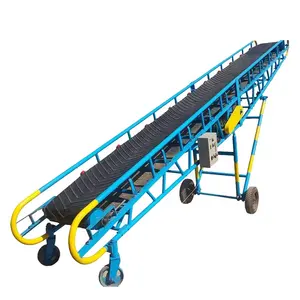
Movable Sand Belt Conveyor System Portable Aggregate Conveyor Soil Powder Belt Conveyor For Truck Loading Unloading


FBD Sand Dirt Transfer Belt Conveyor Machine For Quarry Stone Crusher Plant Transport Belt Conveyors





Cargo conveyor belts are essential components in the material handling industry, facilitating the transportation of goods across various distances within a facility. These belts are integral to numerous sectors, including mining, packaging, and large-scale distribution centers. The efficiency of a cargo conveyor system hinges on the seamless operation of its belts, which are designed to accommodate different operational demands.
The versatility of material handling belts is evident in their range of types and applications. From flat belts for simple linear movement to cleated belts for incline transport, each design serves a specific purpose. In industrial settings, heavy-duty conveyor belts are employed to move large volumes of materials, while in mining, bulk handling belts are used for the efficient transfer of extracted ores.
Industrial conveyor belts are crafted from various materials, each selected for durability and functionality. Synthetic and natural rubber are commonly used for their resilience and ability to handle different weights and sizes of materials. The construction of these belts ensures consistent transmission power, essential for maintaining the flow of operations.
Employing a conveyor belt system in your operations can lead to increased efficiency. These systems are adaptable, allowing for the customization of material movement processes. The automation provided by conveyor belts reduces the likelihood of human error, enhancing operational control and allowing for a more focused approach to productivity. Additionally, the use of these belts can contribute to a safer work environment by reducing the need for manual lifting of heavy items.
Safety is paramount in any industrial operation, and cargo conveyor belts are designed with this in mind. They minimize the risks associated with the manual handling of materials, thereby reducing workplace hazards. Efficiency is also a key benefit, as these belts enable the handling of multiple tasks, supporting a variety of industrial and mining applications without compromising on operational safety.
Modern conveyor belt systems are not only operationally efficient but also environmentally considerate. The materials used in their manufacture often possess anti-corrosion properties, extending the lifespan of the belts and reducing the need for frequent replacements. Economically, they present a cost-effective solution to material handling, requiring minimal maintenance and offering durability that ensures long-term operation without significant wear.